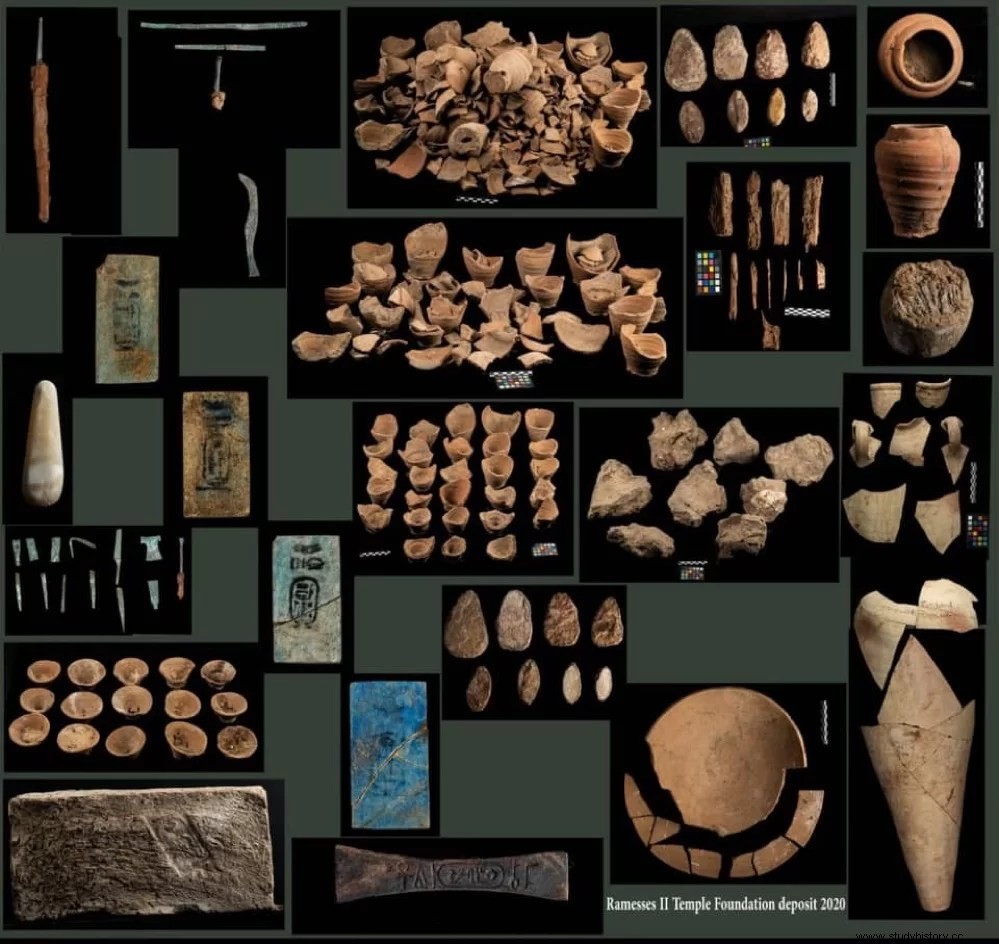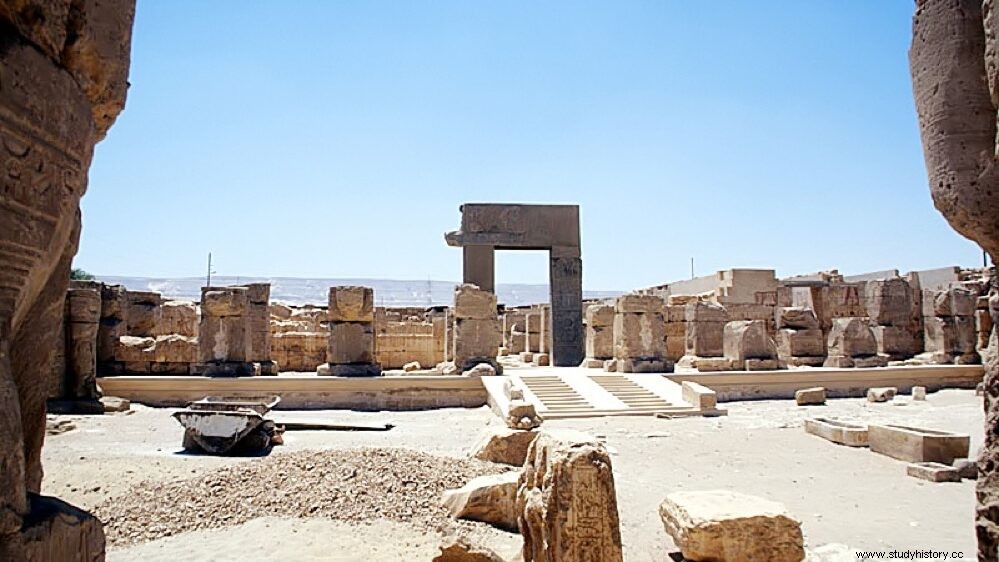The New York University Archaeological Mission to the Temple of Ramses II at Abydos, under the direction of Dr. Sameh Iskander, discovered the foundational deposit in the foundations of the temple in its southwest corner, with numerous objects that were buried in 1279 BC. at the time of its founding ceremony according to a press release issued by the Egyptian Ministry of Tourism and Antiquities.
The materials found in the deposit include food offerings, plates with the name of Ramses II painted in blue or green color, small models of copper construction tools, ceramic vessels with hieratic inscriptions and oval-shaped quartz stones, announced the Secretary General of the Supreme Council of Antiquities, Mostafa Waziri.
The mission also discovered ten large mud brick warehouses attached to the temple palace, originally covered with vaulted brick ceilings. They were used as granaries, storage for other temple provisions, offerings, and other small utensils.

Twelve votive sacrificial bull heads and bones dated to the Ptolemaic period were found inserted within niches cut into the walls of the warehouses. In addition, a complete bull skeleton was found carefully buried under the floor of the temple palace.
Dr. Iskander further stated that foundation deposits bearing the name of Ramses II buried under his first temple built in Egypt confirm that it was indeed built during his reign, and not earlier, during the time of his father. .

The latest discoveries have indeed changed the physical aspect of the Abydos landscape and have shed considerable light on our understanding of the temple and its economy during the 13th century BC.
The insertion of numerous votive sacrificial bulls within the temple walls dating from the Ptolemaic period reveals that the temple was still regarded as a sacred place then.
This is a testimony to the vivid memory of Ramses II in the minds of the Egyptians a thousand years after his reign.
